The Prospect of Whitby is a historic pub located on the banks of the river Thames in Wapping. The pub is known to have been a popular meeting place for sailors, fishermen, and other members of the maritime community, and is one of the oldest pubs in London. This post is about the history of The Prospect of Whitby.
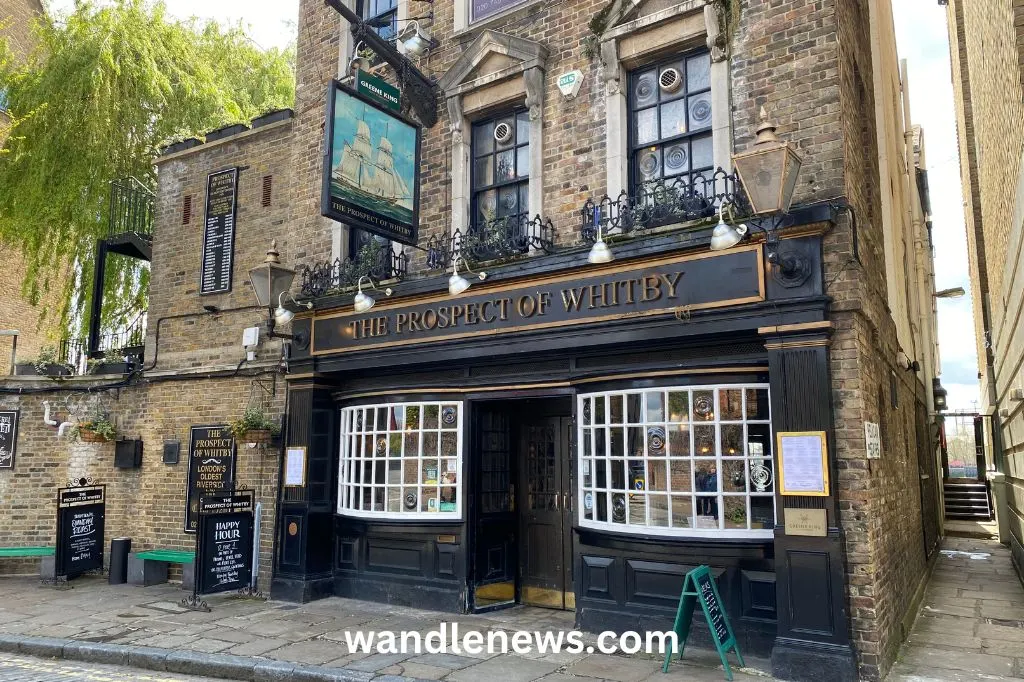
History of the Prospect of Whitby
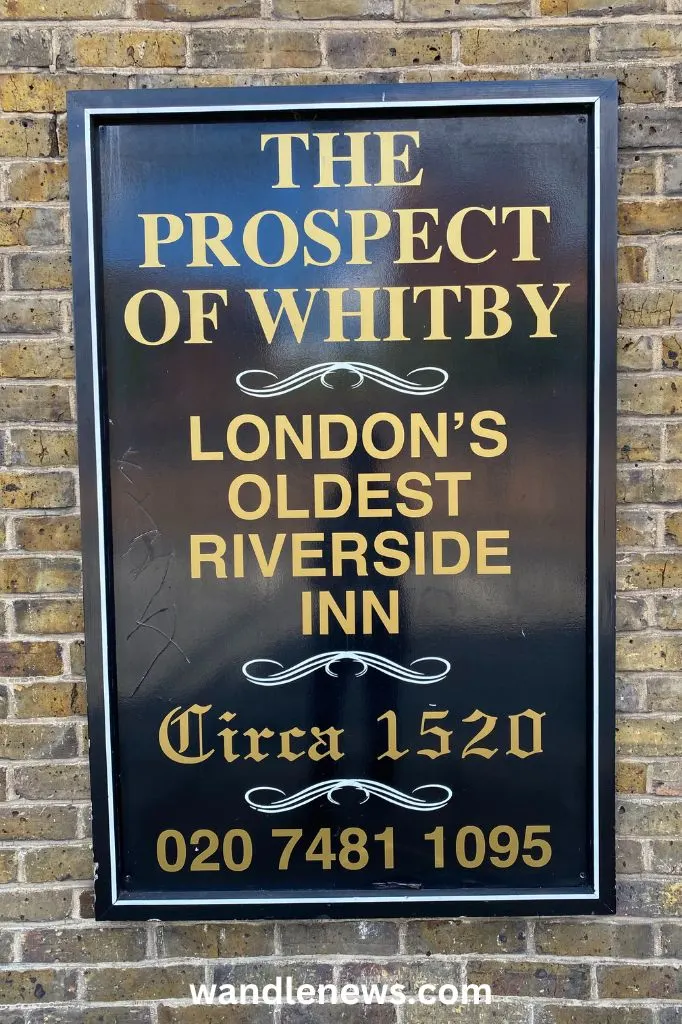
Early History
The Prospect of Whitby was built around 1520, during the reign of Henry VIII. The pub was first known as The Pelican, but later nicknamed The Devil’s Tavern, since it was a notorious hangout for pirates, smugglers, thieves, and other maritime criminals.
Due to its location on the banks of the river Thames, the pub has a long association with people who make their living from the river including sailors, fishermen, boat builders and sea captains. In fact, in 1553, the pub was the departure point for Sir Hugh Willoughby’s disastrous expedition to discover the North-East Passage to China.
The pub has been rebuilt and renovated over the centuries, and today all that remains from its earliest history is the floor of the bar which is over 500 years old.

17th Century
During the 17th century, The Prospect of Whitby became the favourite pub of Judge Jeffreys, who was known as the “hanging judge” due to his harsh sentencing. It is said that Judge Jeffreys would go to the pub for a drink or meal before walking down to Execution Dock, next to Wapping Old Stairs.
The pub’s association with criminals continued during this time, attracting a clientele of smugglers, cut-throats, and footpads. It was a place where the criminal underworld of London would meet.
Despite the pub’s dubious reputation, The Prospect of Whitby still attracted some notable customers during the 17th century. One of them was the diarist Samuel Pepys who regularly visited the pub during his term as a clerk for The Navy, and later Secretary to the Admiralty.

18th Century
In the early 18th century, the pub still had a reputation for being a den of criminals, attracting smugglers, thieves and body snatchers. In the 1770s the pub was rebuilt, and in 1777 its name was changed to “The Prospect of Whitby”, in the hope that it would improve the pub’s image.
The name of the pub came from a ship called “Prospect” that used to berth outside. It was built and registered in Whitby in Yorkshire, and would ferry coal from Newcastle to London.
A few years after the pub’s name was changed, it gained a unique claim to fame becoming the place where the first fuchsia plant in the country was sold. It was brought to England in 1780 by a sailor who managed to keep the plant alive during his travels. It is said that he brought the plant from the West Indies, and sold it for a quart of rum.
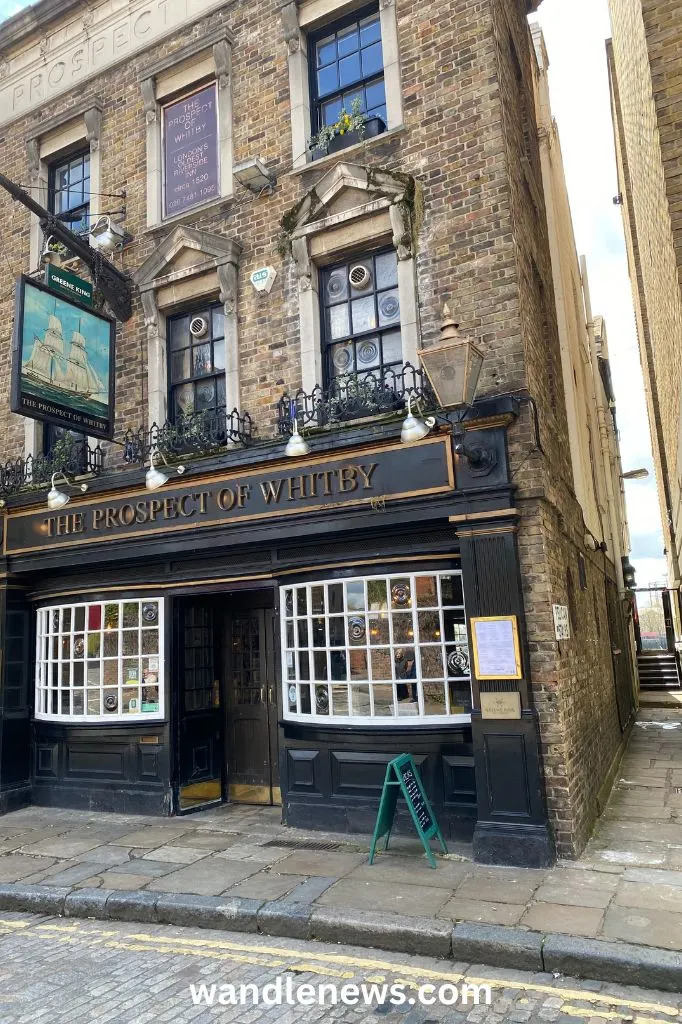
19th Century
Despite trying to change its reputation for being a rough establishment, the pub kept its cock fighting pit and bare knuckle boxing arena well into the nineteenth century.
It was during the 19th century that Wapping’s strong maritime associations changed radically. The London Docks were built between 1799 and 1815, which meant many houses were destroyed, and giant warehouses were built along the riverfront. This led to the population of Wapping dropping by 60%.
The area also became isolated from the rest of London during this time until Brunel’s tunnel was opened in 1843 connecting Wapping to Rotherhithe, and Wapping tube station opened in 1869.
The changing landscape in Wapping had an effect on the clientele at the Prospect of Whitby. Whereas before the area was filled with narrow alleyways leading to taverns, brothels, and dens of criminal activity, the 19th century construction saw much of this destroyed. Instead the Wapping riverfront became filled with docks and warehouses.
During the nineteenth century the pub was visited by Charles Dickens, as well as the artists J.M.W. Turner and James Abbott MacNeill Whistler who both sketched views from the pub.
The most significant feature in the pub that remains from the 19th century is its rare pewter-topped bar. Pewter-top bars were common in the nineteenth century, but the pub has one of the few that survived 20th century modernisation. It is also thought to be the longest in the country.

20th Century
During the second world war, Wapping was devastated by German bombing, and the post-war closure of the docks. The area remained run-down and derelict into the 1980s.
The image below, taken from The Tatler, shows what the area around The Prospect of Whitby looked like before the war.
The clipping is dated 20th December 1933, and the caption reads: “The Prospect of Whitby” Public-House. Overlooking the Pool of London, surrounded by barges up for repair, stands this old hostelry; once the haunt of smugglers, and immortalized by Dickens under the name of “Six Jolly Fellowship Porters,” the old “pub.” remains a picturesque relic of the past.
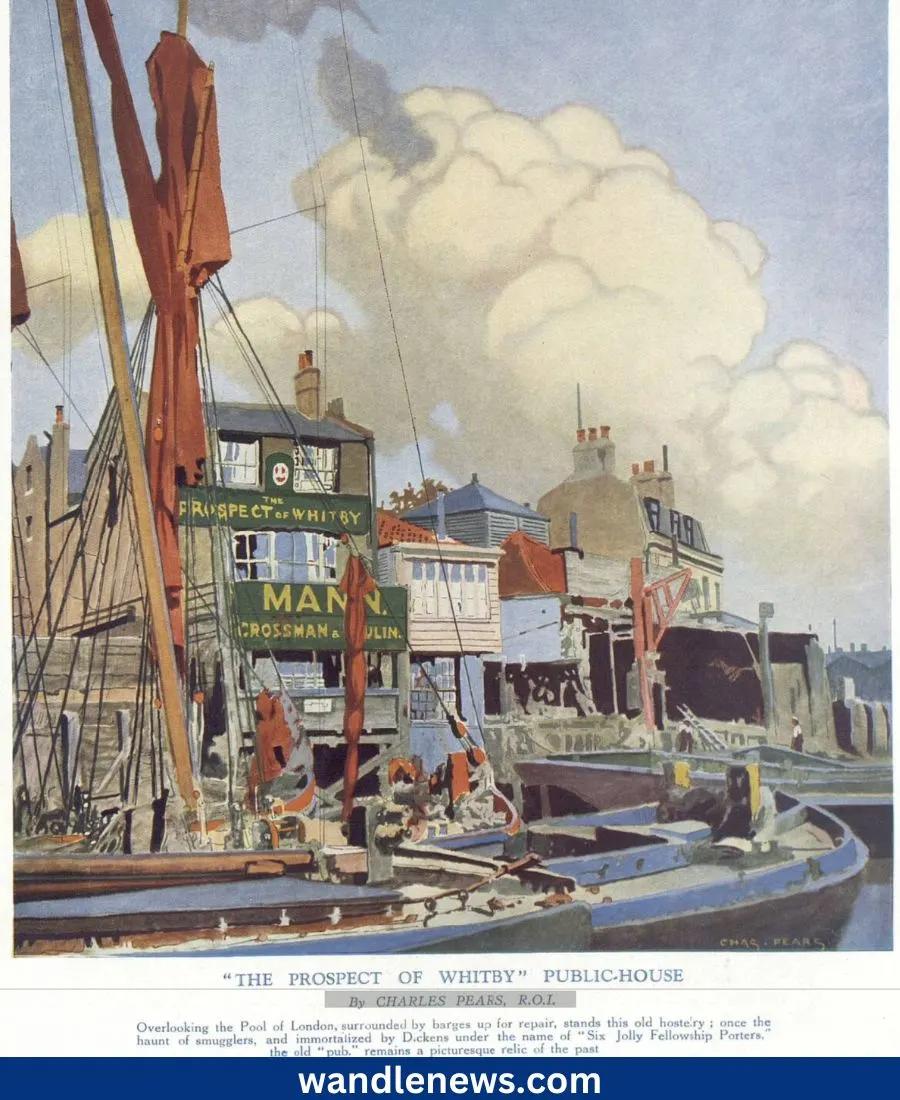
The pub itself survived any serious damage from bombing during the second world war, and in December 1950 it became listed as a Grade II building. The following year it was renovated to double the interior space. The newspaper clipping below is taken from the Yorkshire Post and Leeds Intelligencer, on 17th September 1951 once the reconstruction work had started.

In January 1953, The Prospect of Whitby was raided by armed robbers. The clipping below is taken from the Sunday Mirror newspaper on 11th January 1953.
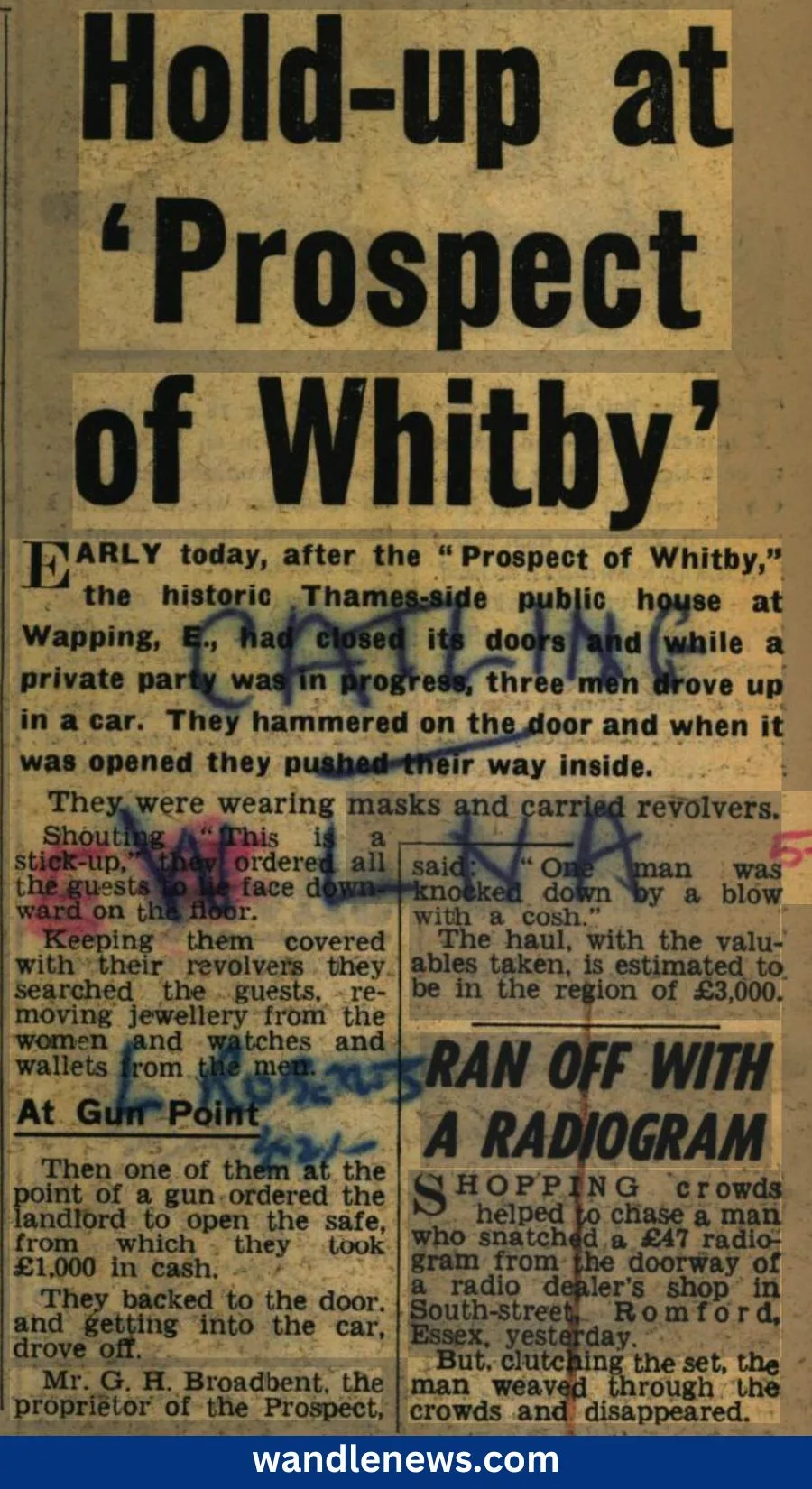
Famous Visitors
Over the centuries, The Prospect of Whitby has attracted many notable customers including famous pirates and sea captains, writers, artists, and modern celebrities. A few of the most famous visitors include:
- Samuel Pepys – diarist
- Captain Kidd – Scottish privateer and pirate
- Samuel Johnson – writer and lexicographer
- Charles Dickens – writer
- Frank Sinatra – American singer and actor
- Judy Garland – American actress and singer
- Princess Margaret – sister of Queen Elizabeth II
- Kirk Douglas – American actor and producer
- Paul Newman – American actor and philanthropist
- Prince Rainier III of Monaco

Ghosts and Legends
Legend has it that the pub is haunted by the ghost of a young woman who was a “moll cutpurse.” This was a female pickpocket who would approach men pretending to be interested in them before cutting their purses from their belts.
According to the legend, the woman was caught by one of her victims, who then beat her to death in the back of the tavern. Today, visitors claim to have seen her ghost, sitting in the corner of the pub smoking a pipe.

Location
The Prospect of Whitby is located at 57 Wapping Wall, London, E1W 3SH. The exact location is shown on the map below. The nearest train station is Wapping on the London Overground.
You can access the banks of the Thames at low tide via a narrow alleyway next to the pub. The photograph below shows the alleyway leading to Pelican Stairs, which take you down to the river. Next to the river you will see the replica gallows as a reminder of the once nearby Execution Dock.
Read more about The Prospect of Whitby beach on the river Thames.
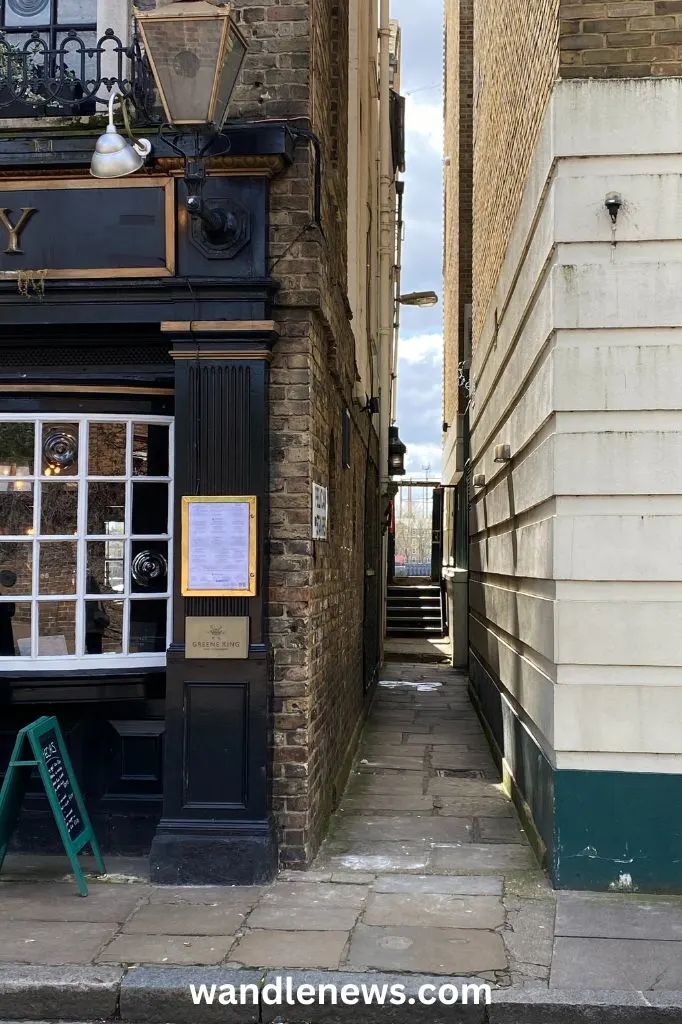
FAQs
How Old is the Prospect of Whitby?
The Prospect of Whitby is over 500 years old, having first been built around 1520. Over the centuries the pub has been renovated and rebuilt many times. Today, all that remains of the pub from when it was first built is the stone floor of the bar.
Why is it called the Prospect of Whitby?
The pub was named “The Prospect of Whitby” in 1777, after a ship called “Prospect” that used to berth outside the pub. “Prospect” was built in Whitby in Yorkshire, and would ferry coal to London from Newcastle.

Gallery
Below are some of the photographs I took at The Prospect of Whitby pub.
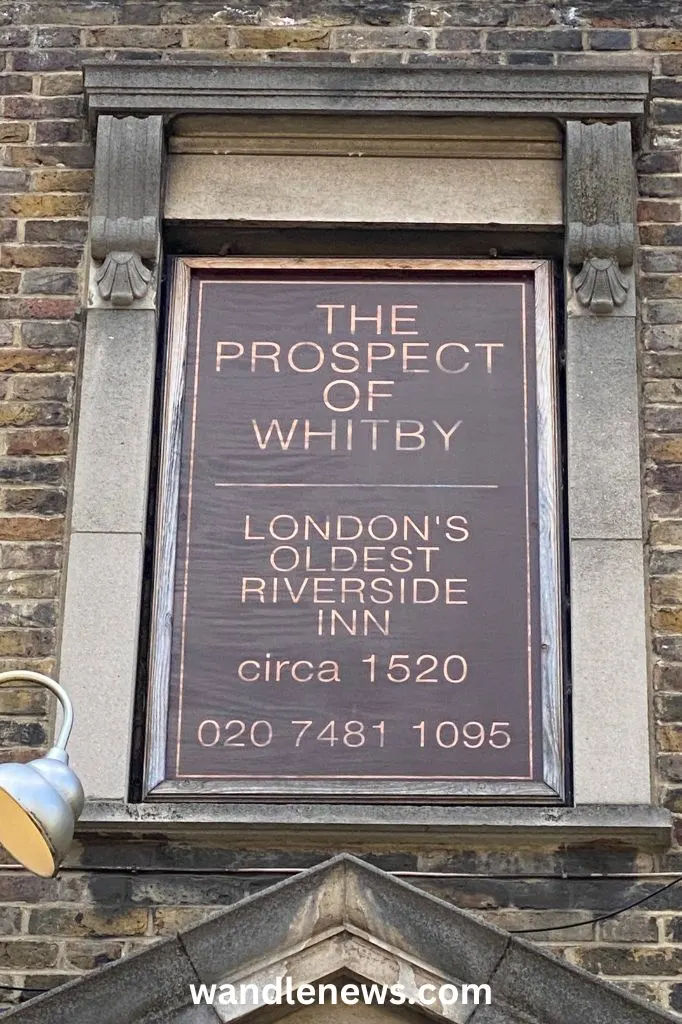
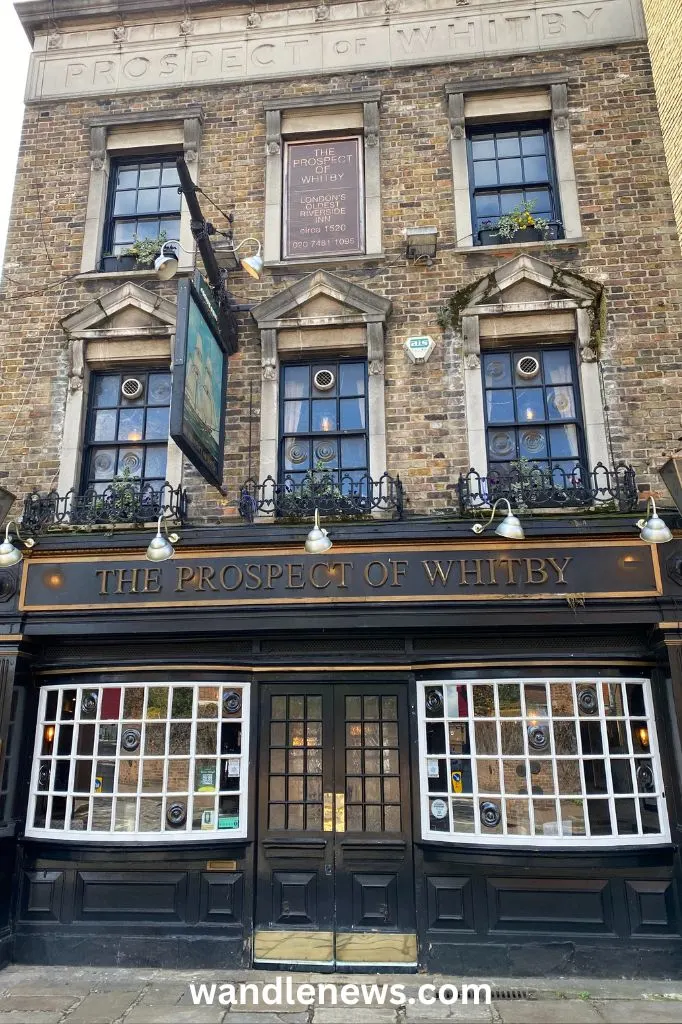

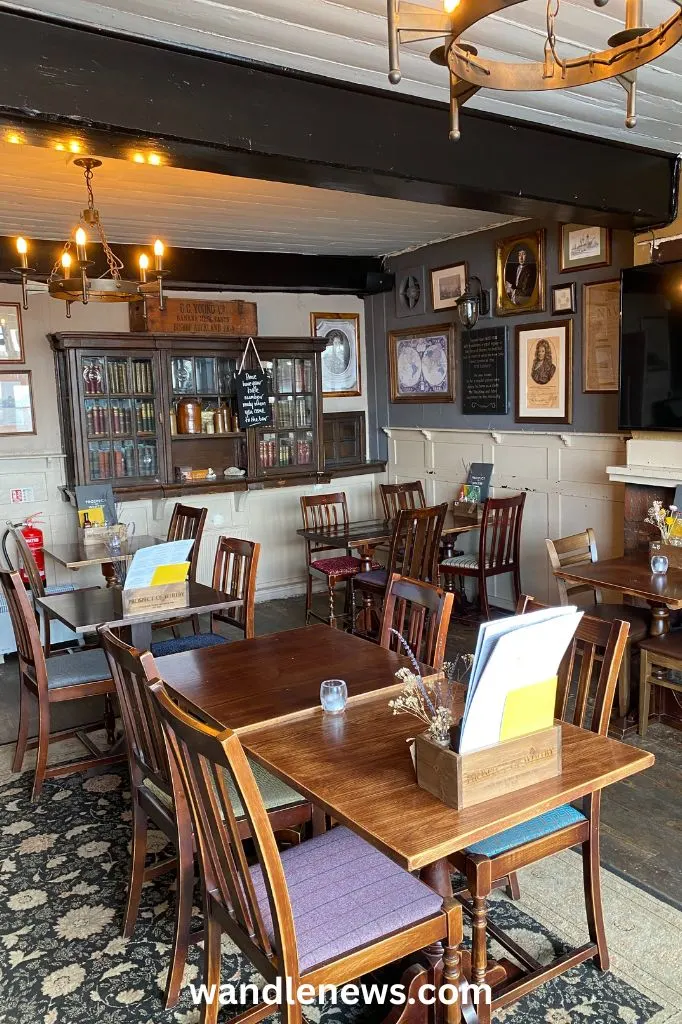
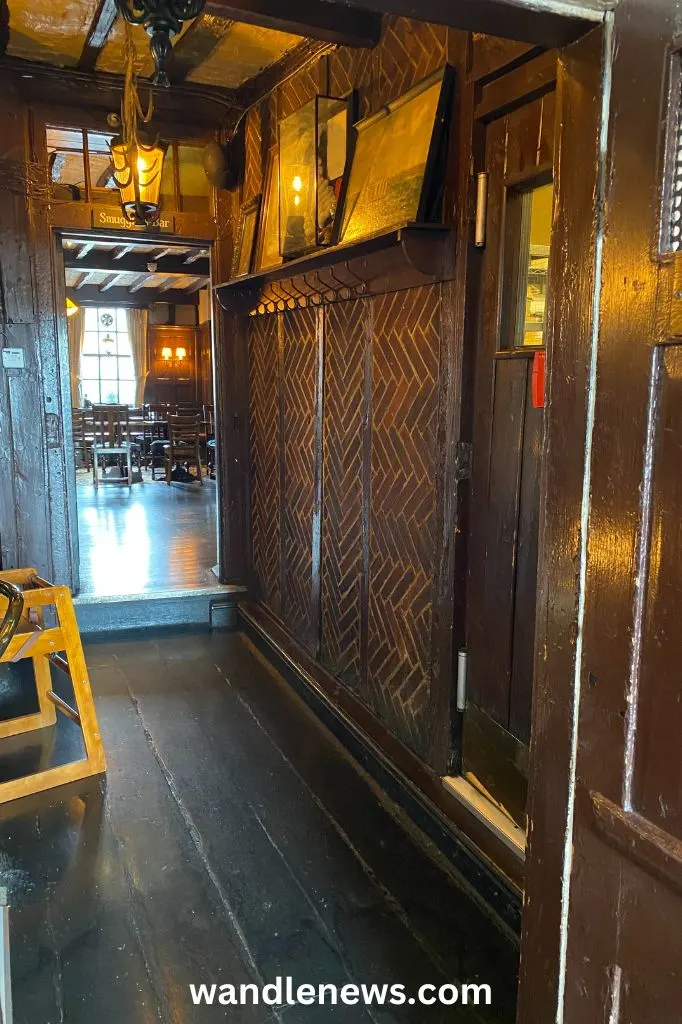
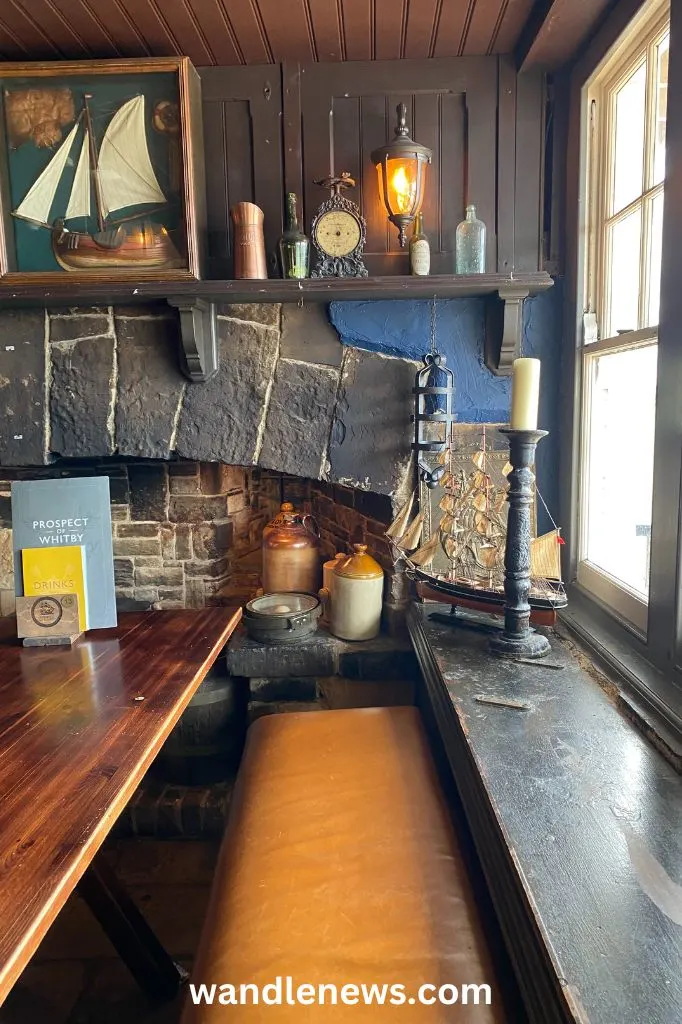

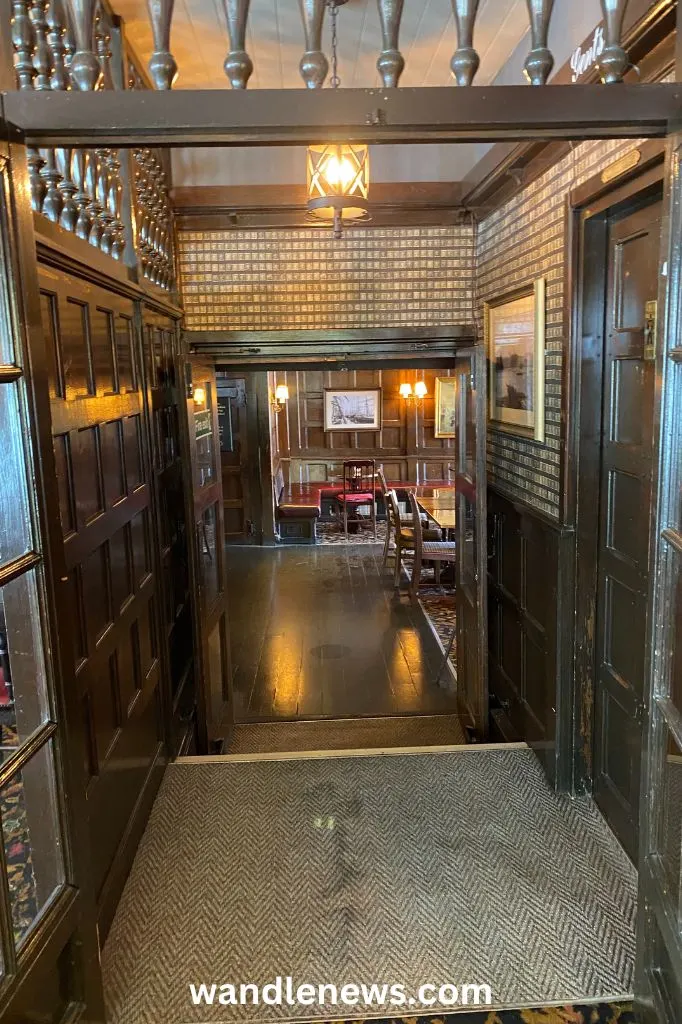
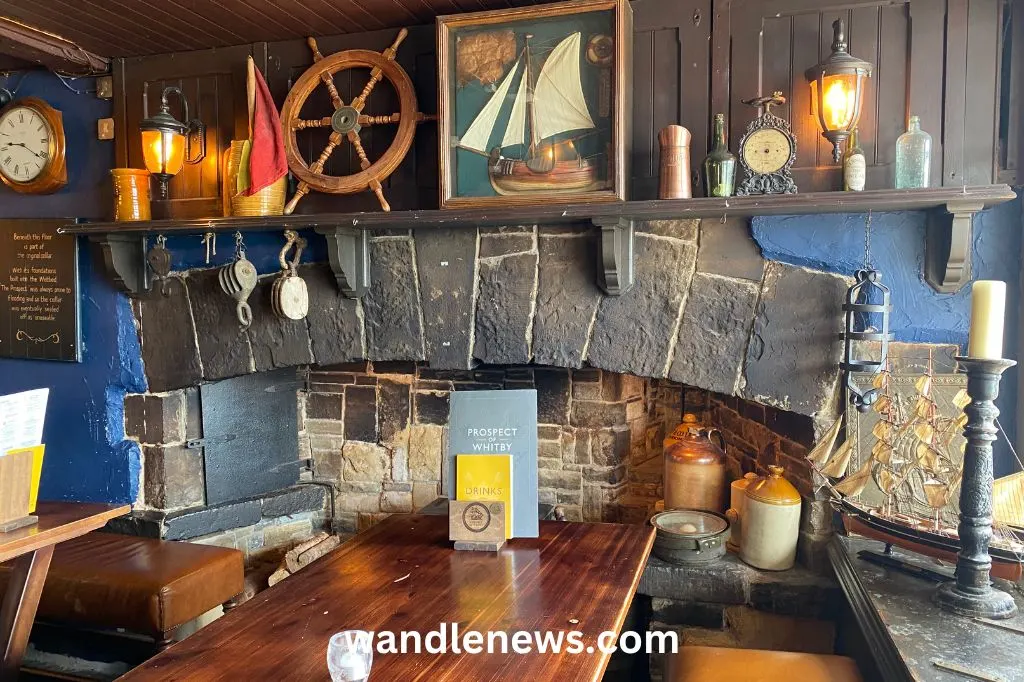


This Post was About the History of The Prospect of Whitby
Thank you for reading my post about the history of the Prospect of Whitby. The Prospect of Whitby is the oldest riverside inn in London. If you visit, be sure to check out the rickety stairs leading up to the function rooms, the original flagstone floor, and The Lookout and Pepys Room which have great views of the river.
